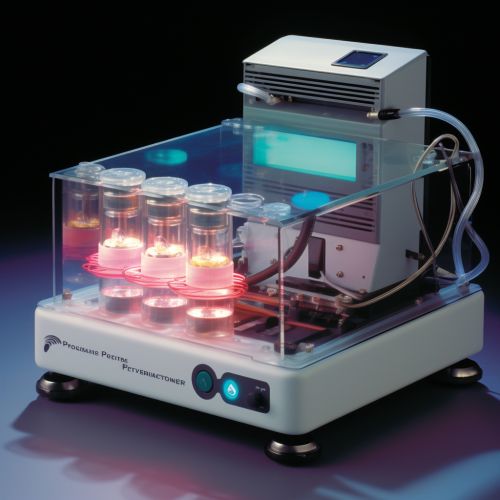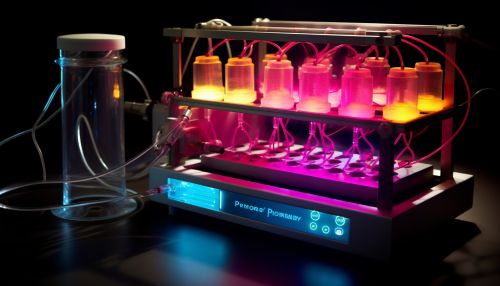Polymerase Chain Reaction in Genetic Analysis
Introduction
Polymerase chain reaction (PCR) is a widely used method in molecular biology to make multiple copies of a specific DNA sequence. It is an indispensable tool in modern genetic analysis, allowing researchers to amplify, or make many copies of, small segments of DNA for study.


Principles of PCR
PCR is based on the natural process of DNA replication, but it is carried out in a laboratory under controlled conditions. The key ingredients for a PCR include a DNA template, primers, deoxyribonucleotides (dNTPs), and a heat-stable DNA polymerase.
DNA Template
The DNA template is the sequence of DNA that will be amplified. It can be a very small amount, even a single molecule, because the PCR process will create many copies.
Primers
Primers are short pieces of DNA that are made in a laboratory. Since they're designed to bind to specific locations on the DNA template, they determine the specific DNA sequence that will be amplified.
Deoxyribonucleotides (dNTPs)
dNTPs are the building blocks of DNA. During PCR, the DNA polymerase adds dNTPs to the primer in a sequence determined by the DNA template.
DNA Polymerase
DNA polymerase is an enzyme that synthesizes new strands of DNA. In PCR, a heat-stable DNA polymerase is needed because the process involves high temperatures that would denature, or unravel, the DNA polymerase from most organisms.
Process of PCR
PCR is a cyclic process, with each cycle consisting of three steps: denaturation, annealing, and extension.
Denaturation
The first step in PCR, denaturation, involves heating the reaction to a high temperature (around 94-96°C). This heat breaks the hydrogen bonds that hold the two strands of the DNA molecule together.
Annealing
In the second step, the reaction is cooled to allow the primers to bind to their complementary sequences on the DNA template. This is known as annealing.
Extension
In the final step, the temperature is raised again, and the DNA polymerase extends the primers, adding dNTPs onto the primer in a sequence determined by the DNA template.
Applications of PCR in Genetic Analysis
PCR has revolutionized the field of genetic analysis. By generating enough copies of a DNA sequence, PCR allows for the direct analysis of the DNA. This can be used in a variety of applications, including genetic testing, DNA sequencing, and forensic science.
Genetic Testing
PCR is often used in genetic testing to amplify genes associated with certain conditions or diseases. This allows for the detection of genetic mutations that may lead to genetic disorders.
DNA Sequencing
PCR is also used in DNA sequencing. By generating many copies of a DNA sequence, PCR allows for the direct analysis of the sequence and the identification of any mutations.
Forensic Science
In forensic science, PCR is used to amplify DNA samples found at crime scenes. This can help to identify suspects or victims.
Limitations and Challenges of PCR
While PCR is a powerful tool in genetic analysis, it is not without its limitations and challenges. These include issues with contamination, errors in DNA replication, and the need for precise temperature control.
Contamination
One of the biggest challenges in PCR is contamination. Because PCR can amplify even small amounts of DNA, any contamination can lead to false results.
Errors in DNA Replication
Another challenge is errors in DNA replication. While DNA polymerase is highly accurate, it can still make mistakes. These errors can lead to mutations in the amplified DNA.
Temperature Control
Finally, precise temperature control is critical in PCR. The temperatures used in PCR are critical for the denaturation and annealing steps, and any variation can affect the results.
Conclusion
PCR is a powerful tool in genetic analysis, allowing for the amplification of specific DNA sequences. While it has its challenges, its wide range of applications, from genetic testing to forensic science, make it an indispensable tool in modern biology.
